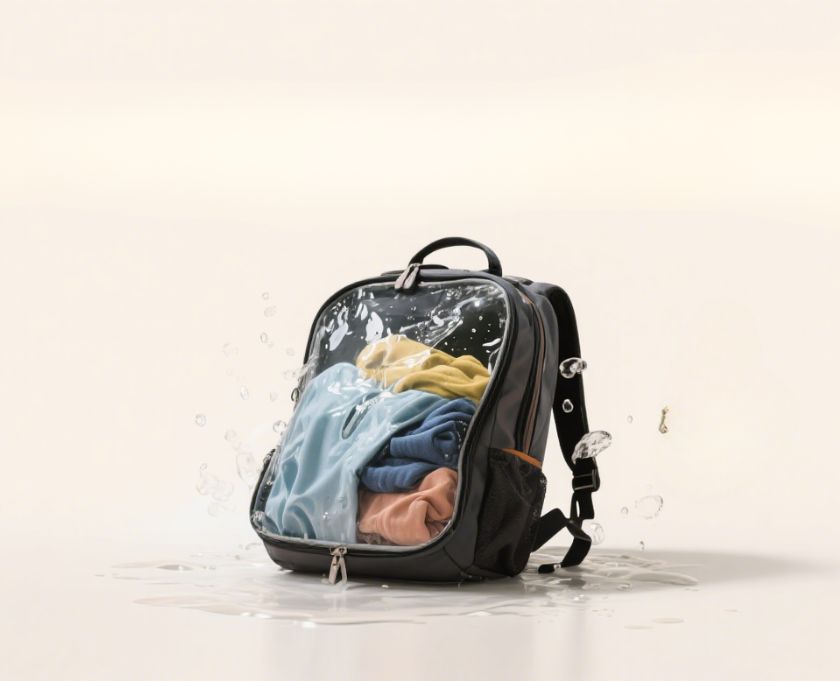Beautiful Plants For Your Interior

Vacuum compression backpacks are brilliant for saving space—especially when you’re traveling light. But not every item is suitable for compression. If you pack the wrong things, you risk damage, loss of function, or even ruining the backpack’s seal.
In this guide, we’ll walk you through the seven items you should never pack in a vacuum compression backpack—plus why they’re better left unpacked (or packed differently). Let’s keep your gear safe and your travels stress-free.
1. Fragile Electronics and Gadgets
Why it’s a problem: Vacuum compression applies pressure. Even with padded sleeves, gadgets like tablets, smartwatches, and DSLR cameras are vulnerable.
What can go wrong:
- Cracked screens
- Bent metal frames
- Damaged buttons or ports
Better alternative:
Carry electronics in a hard-shell case or your carry-on bag. Keep them separate from compressed items.
💡 Pro Tip: If you must bring electronics, make sure they’re well-padded and placed in an external pocket of the backpack.
2. Food Items That Can Leak or Get Crushed
Why it’s a problem:
Vacuum compression bags squeeze everything. That protein bar? Flattened. That yogurt? Possibly exploded.
At risk:
- Liquids (juice, yogurt, sauces)
- Soft fruits (bananas, berries)
- Packaged snacks with weak seals
What to do instead:
Store food in a rigid container and place it in a non-compressed compartment or use a small cooler bag.
3. Items That Depend on Shape
Some items are only useful in their original shape. Compression ruins that.
Examples:
- Padded bras
- Foam-based orthopedic gear
- Wide-brimmed hats
- Dress shoes with structure
Solution:
Pack these in a non-compressed compartment or wear them during travel.
4. Important Documents and Paper Items
Why not?
Documents can wrinkle, bend, or tear when compressed. Moisture buildup may also occur inside sealed bags.
What documents to avoid packing:
- Passports
- Airline tickets
- Travel insurance papers
- Printed itineraries
What to do instead:
Use a waterproof document folder and keep it in an easily accessible external pocket or handbag.
5. Toiletries in Soft Packaging
Toothpaste, shampoo, and sunscreen in soft plastic tubes are easily squeezed during compression—often with messy results.
What can go wrong:
- Caps pop off
- Leaks stain your clothes
- Burst containers
How to avoid it:
Place toiletries in a separate toiletry bag with hard-shell sides or travel-size containers with tight lids.
🔄 Alternatively, consider solid versions of toiletries (like bar shampoo or solid deodorant) that are compression-safe.
6. Items Prone to Breakage Under Pressure
This includes fragile souvenirs, ceramics, decorative bottles, or glass containers. Compression won’t just squeeze them—it might shatter them.
Better method:
Wrap breakables in clothing and carry them in a rigid case or your personal item bag.
7. Anything With Trapped Air
This one’s a classic compression mistake.
Why avoid:
Air-filled items create uneven pressure and may burst or cause the vacuum bag to lose its seal.
Examples include:
- Inflatable pillows
- Air cushions
- Bubble-wrapped items
Best practice:
Deflate completely before packing—or better, store separately.
✅ Summary: Pack Smart, Compress Smarter
Here’s a quick checklist of items to avoid when using a vacuum compression backpack:
| Item Type | Why to Avoid | Safer Alternative |
|---|---|---|
| Fragile electronics | Risk of breakage | Hard-shell cases / carry-on |
| Leaky or squishable foods | May burst or crush | Rigid containers / cooler bag |
| Shaped items (bras, hats) | Lose structure | Non-compressed storage |
| Paper documents | Wrinkles, tears, moisture | Waterproof folder outside compression |
| Soft-pack toiletries | Leaks and spills | Travel bottles / separate toiletry bag |
| Breakables (glass, ceramic) | High risk of breakage | Wrapped in clothing / rigid case |
| Inflatable items | Air expansion ruins compression | Deflate or pack separately |
✈️ Final Thoughts
Vacuum compression backpacks are excellent space savers—but only if used correctly. By knowing what not to pack, you can protect your belongings, avoid messy spills, and maximize efficiency.
Always separate items that are fragile, pressure-sensitive, or contain air. When in doubt, remember: just because it fits doesn’t mean it belongs.